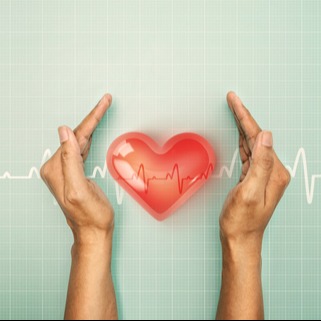
Understanding the nuances of heart attack symptoms in women is crucial, as they often differ significantly from those experienced by men. The "Am I Having a Heart Attack? Female Quiz" serves as an essential preliminary self-assessment tool designed to raise awareness and facilitate early detection. As we explore the intersections between gender-specific symptoms, lifestyle factors, and the often-misinterpreted signs of distress, we must consider the critical question: How well do we truly recognize the subtler, yet potentially fatal, indicators of a heart attack in women? This discussion invites a deeper examination of our perceptions and preparedness in addressing cardiac emergencies in women.
Key Takeaways
Review symptoms such as chest pressure, neck discomfort, and unusual fatigue, which are common in female heart attack cases.
Evaluate the persistence and progression of symptoms, as heart attack signs often gradually intensify and do not quickly resolve.
Consider risk factors like family history, smoking, high stress levels, and a sedentary lifestyle, all of which elevate heart disease risks.
Distinguish between anxiety and heart attack symptoms, as heart attacks generally involve physical weakness and pain radiating to the arms or jaw.
If symptoms closely resemble those of a heart attack, seek immediate medical help rather than relying solely on online assessments.
Recognizing Heart Attack Symptoms
Recognizing the symptoms of a heart attack in women is crucial, as they often manifest differently than in men. Signs may include indigestion-like pain, neck or jaw discomfort, and stomach upset. Unlike the stereotypical chest clutching often depicted in the media, heart attack symptoms in women can be subtler. While chest discomfort remains a significant symptom, it may not be as pronounced or could feel different, such as a squeezing sensation or pressure rather than sharp pain.
It's essential to pay attention to other warning signs that might accompany or even precede chest discomfort. Dizziness, nausea, and shortness of breath are critical symptoms that can signal an impending heart attack. Recognizing these signs can be challenging, as they are often mistaken for less severe health issues.
Prompt identification and response to these symptoms can be life-saving. Women should be encouraged to seek immediate medical attention if they experience these symptoms, regardless of whether the chest pain is severe. Understanding and spreading awareness about the unique presentation of heart attack symptoms in women is vital for early detection and effective treatment.
Lifestyle Factors and Heart Risk
Lifestyle factors play a pivotal role in determining the risk of heart attacks among women. Behaviors such as smoking, poor diet, and a sedentary lifestyle significantly increase the likelihood of experiencing a heart attack. Recognizing these risks is crucial, as the symptoms of a heart attack in women can often be subtle, sometimes presenting without the classic chest pain. Understanding and modifying these behaviors is essential for maintaining heart health.
High stress levels and excessive alcohol consumption also negatively impact cardiovascular health, potentially leading to high blood pressure, a critical risk factor for heart attacks. Test your knowledge and awareness of how your daily habits may be influencing your heart health. Consider how factors like diet and exercise contribute to the broader picture of heart attack risks.
To mitigate these risks, it is advised to maintain a healthy weight, manage cholesterol levels, and control blood pressure through regular monitoring. Regular physical activity, a balanced diet rich in fruits and vegetables, and stress-reducing practices can significantly reduce the likelihood of a heart attack. Women with a family history of heart disease or those experiencing high levels of chronic stress should be particularly vigilant.
Comparing Anxiety and Heart Attacks
Your text is clear and well-written. I’ve made only a small tweak for flow:
Understanding the differences between the symptoms of anxiety and those of a heart attack is crucial for effective health management and timely medical intervention. The confusion between the two can lead to unnecessary panic or, conversely, a dangerous delay in seeking help. Here are the key distinctions:
Chest Pain Nature: Chest pain related to a heart attack generally feels like intense pressure or a squeezing sensation, whereas anxiety often causes sharp or stabbing chest pain.
Accompanying Symptoms: While both conditions can present with chest pain and shortness of breath, heart attack symptoms also typically include weakness and pain that may radiate to the jaw, neck, arms, or shoulders. Anxiety, on the other hand, is more likely to be accompanied by overwhelming feelings of dread or fear.
Shortness of Breath: This symptom is common in both scenarios but occurs for different reasons. In heart attacks, shortness of breath arises due to the heart's inability to pump blood effectively, while in anxiety, it is often caused by hyperventilation.
Symptom Progression: Symptoms of a heart attack usually develop gradually and persist or worsen over time, whereas symptoms of anxiety can appear suddenly and are often episodic, varying in intensit.
Differentiating these symptoms is vital for determining the correct response to potentially life-threatening situations.
Immediate Actions To Take During a Heart Attack
When experiencing symptoms of a heart attack, immediate action is crucial to reduce the risk of severe heart damage and improve survival chances. Recognizing the urgency of these symptoms is essential. The first and most critical step is calling emergency services. Quick response times are vital in treating heart attacks, so professional help should be sought immediately.
Delaying medical attention can have dire consequences, including permanent heart damage or death. Therefore, it is advised not to drive oneself or have someone else drive to the hospital. Instead, calling an ambulance ensures that medical care begins en route to the hospital.
Here is a quick guide on immediate actions to take during a heart attack:
Action | Reason | Outcome |
Call 911 immediately | Ensures quick professional response | Early treatment, better prognosis |
Stay calm | Reduces strain on the heart | Minimizes further heart damage |
Sit or lie down | Prevents falls and reduces strain | Enhances comfort and safety |
Take an aspirin | Thins the blood | Helps prevent blood clots |
Do not delay | Every minute counts | Increases survival rates |
Acting without hesitation by following these steps can significantly influence the outcomes of a heart attack, emphasizing the importance of immediate action and rapid medical response.
Preventative Measures and Resources
Having explored the immediate actions during a heart attack, we now turn our attention to preventative measures and resources that are vital for maintaining heart health in women. Understanding risk factors and symptoms is crucial, but implementing preventative measures can significantly reduce the likelihood of heart-related issues. Here are key strategies every woman should consider:
Regular Exercise and Diet: Engage in at least 150 minutes of moderate aerobic activity per week and adopt a diet rich in fruits, vegetables, lean proteins, and whole grains. This helps manage weight and reduce the risk of heart disease.
Stress Management: Techniques such as mindfulness, yoga, or regular therapy sessions can alleviate stress, a significant contributor to heart health problems.
No Smoking: Avoid smoking and exposure to secondhand smoke. Tobacco use is a major risk factor for developing heart disease.
Regular Health Check-ups: Schedule routine screenings for blood pressure, cholesterol levels, and other potential issues. Early detection of irregularities can lead to timely interventions.
Resources such as heart health workshops, informational websites, and support groups are invaluable. Women should leverage these tools to stay informed and proactive about their heart health.
Frequently Asked Questions
How Do You Test Yourself for a Heart Attack?
Testing yourself for a heart attack is not recommended. If you are experiencing symptoms such as chest pain or shortness of breath, seek immediate medical attention rather than attempting to self-diagnose. Early intervention can be critical.
What Are the First Symptoms of Heart Blockage in a Woman?
The initial symptoms of heart blockage in women often include unusual fatigue, shortness of breath, nausea, and pain in the back or jaw, which can be mistaken for less serious conditions.
How Do I Know if I'm Having a Heart Attack as a Woman?
To determine if you're experiencing a heart attack, monitor symptoms such as unusual chest pressure, shortness of breath, nausea, and discomfort in the jaw, back, or arms—signs that are often subtler in females than in males.
Am I Having a Heart Attack or Is It Just Anxiety?
Distinguishing between a heart attack and anxiety is crucial. Heart attacks often involve persistent chest pain, while anxiety may cause similar sensations but typically includes palpitations and a sense of panic. Seek immediate medical evaluation.
Rely on PlanetDrugsDirect.com to Buy Prescription Discount Drugs Online
As a trusted prescription referral service, we offer important benefits whenever you order online. Each of our partner pharmacies and/or government-approved dispensaries is committed to providing the best experience possible of any online prescription referral service on the internet. We offer:
Low prices
Quick turn-around times
Generic and brand-name medications
Unparalleled customer service
Sources
Bhatt DL, Lopes RD, Harrington RA. Diagnosis and Treatment of Acute Coronary Syndromes: A Review. JAMA. 2022 Feb 15;327(7):662-675. doi: 10.1001/jama.2022.0358. Erratum in: JAMA. 2022 May 03;327(17):1710. doi: 10.1001/jama.2022.6185. PMID: 35166796.
Ferry AV, Anand A, Strachan FE, et al. Presenting Symptoms in Men and Women Diagnosed With Myocardial Infarction Using Sex-Specific Criteria. J Am Heart Assoc. 2019 Sep 3;8(17):e012307. doi: 10.1161/JAHA.119.012307. Epub 2019 Aug 20. PMID: 31431112; PMCID: PMC6755854.
Jackson MN, McCulloch BJ. 'Heart attack' symptoms and decision-making: the case of older rural women. Rural Remote Health. 2014;14:2560. Epub 2014 May 5. PMID: 24793837.
Mehta LS, Beckie TM, DeVon HA, et al; American Heart Association Cardiovascular Disease in Women and Special Populations Committee of the Council on Clinical Cardiology, Council on Epidemiology and Prevention, Council on Cardiovascular and Stroke Nursing, and Council on Quality of Care and Outcomes Research. Acute Myocardial Infarction in Women: A Scientific Statement From the American Heart Association. Circulation. 2016 Mar 1;133(9):916-47. doi: 10.1161/CIR.0000000000000351. Epub 2016 Jan 25. PMID: 26811316.
Tullmann DF, Dracup K. Knowledge of heart attack symptoms in older men and women at risk for acute myocardial infarction. J Cardiopulm Rehabil. 2005 Jan-Feb;25(1):33-9. doi: 10.1097/00008483-200501000-00008. PMID: 15714110.
Sagris M, Antonopoulos AS, Theofilis P, Oikonomou E, Siasos G, Tsalamandris S, Antoniades C, Brilakis ES, Kaski JC, Tousoulis D. Risk factors profile of young and older patients with myocardial infarction. Cardiovasc Res. 2022 Jul 27;118(10):2281-2292. doi: 10.1093/cvr/cvab264. PMID: 34358302.
 Medically reviewed by
Medically reviewed by 





